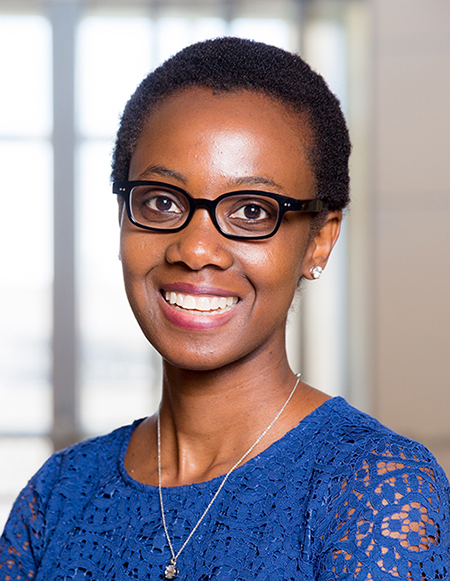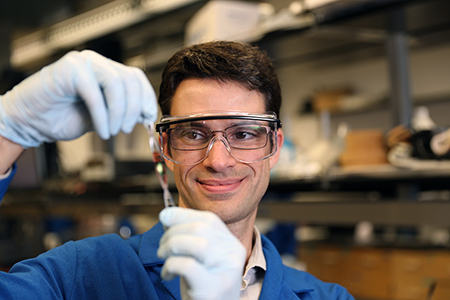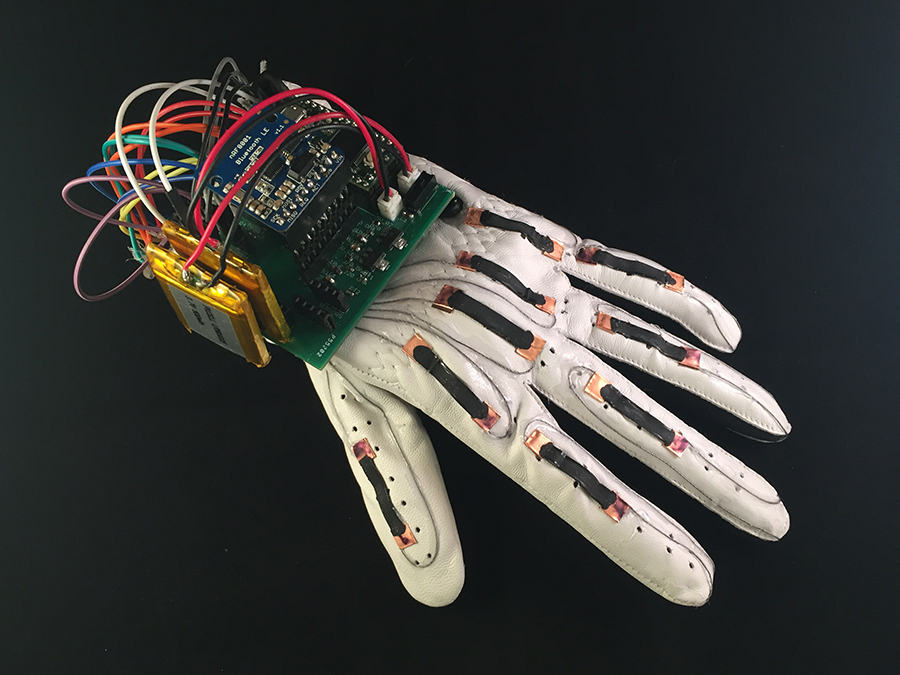
Engineers talk VR, AI and nanotechnology at San Diego Comic-Con
Published Date
By:
- Ioana Patringenaru
Share This:
Article Content

Computer science professor Ndapa Nakashole takes part in a panel about the future on AI at Comic-Con.
It’s not every day that engineers get to speak side by side with the people behind hit movies and TV series. But that is exactly what two engineering faculty members are doing this week at Comic-Con in San Diego.
Computer scientist Ndapa Nakashole will share the stage with one of the screenwriters for the first two Terminator movies, as well as other scientists to try and puzzle out whether computers will take over the world. Darren Lipomi, a professor of nanoengineering, three graduate students and industry representatives attempted to separate fact from fiction about how their discipline is portrayed in science fiction.
Comic-Con takes place July 19 to 23 in and around the San Diego Convention Center and attracts increasingly large crowds every year—including very likely engineering students and their professors.
On July 21, computer science professor Ndapa Nakashole, a member of UC San Diego’s Artificial Intelligence Group, will be among the select few researchers invited to discuss the future of artificial intelligence with producers and screenwriters of some well-known science-fiction films and TV shows. The panel, titled “Artificial Intelligence: Will Computers Take over the World?” is organized by the Fleet Science Center, and will feature Hollywood writers Craig Tilley (who writes for and produces Marvel's Agents of S.H.I.E.L.D.) and William Wisher, Jr. (who wrote the screenplays for The Terminator and Terminator 2: Judgment Day). Other sci-fi writers and artificial intelligence researchers are also likely to join the conversation which will take place at 4:30 p.m. in room 24 ABC. To set the stage, organizers said they hope to pose the big questions about the future of AI: "How does real AI science compare to its depictions in movies, on TV and in books? Could AI save the world -- or be its doom?"
In her session at Comic-Con, Nakashole is likely to drawn on her experience with developing algorithms that enable computers to understand and generate human language. Specifically, she is working on machine learning methods that learn language from large collections of data. Some of the problems she hopes to overcome are related to acquiring knowledge, answering questions, recognizing and linking an entity, and "machine translation for low-resource languages."

Darren Lipomi, a nanoengineering professor, spoke about his discipline and about virtual reality.
On July 20, nanoengineering professor Darren Lipomi and graduate students Jeanne Lemaster and Chava Angell were part of a panel discussing the use of nanotechnology in popular science fiction. These UC San Diego nanoengineers, along with chemical engineering alumna Robin Ihnfeldt (president/CEO of General Engineering Research LLC) and Aaron Saunders (research lead at nanoComposix), discussed how nanotechnology is portrayed in TV and film — from nanites to Mark 42 armor and the Terminator — and compare it to cutting-edge research applications in university labs today. The panel was titled “Nanotechnology in Sci-Fi: Fact or Fiction” and took at 1:30 p.m. in room 8 of the San Diego Convention Center.
Lipomi’s contribution to the panel was discussing the fictional holodeck popularized by Star Trek and its ties to research in his lab, where researchers are currently developing a glove out of nanomaterials that could allow the wearer to touch and feel objects in virtual reality. Lipomi’s team has already made significant strides toward this technology. They’ve recently published a paper in PLOS ONE about a glove made of stretchable electronics that can translate the American Sign Language alphabet and control a virtual hand. His team also works on building “molecularly stretchable electronics” and next generation solar cells.

Lipomi's team developed a glove that can translate ASL and control a virtual hand.
Nanoengineering graduate students Angell and Lemaster will be talking about how nanorobots — often depicted as swarms of tiny monsters that can infect, brainwash or annihilate humanity — in reality have a variety of potentially life-saving applications. Angell, for example, is building nanorobots out of DNA that could be used to deliver medicine to sites in the body where it is most needed. Also in the lines of nanomedicine, Lemaster is working on a project to improve imaging for cancers that lurk deep inside the body where they’re harder to detect. And to do that, she designs nanoparticles that can “see” within deep regions of the body in real time.
These engineers won’t be the only ones from UC San Diego talking up real science at Comic-Con. Scientists from the Scripps Institution of Oceanography will participate in a session titled "More Science in Your Fiction with the League of Extraordinary Scientists and Engineers" on Sunday, July 23.
Share This:
You May Also Like
Stay in the Know
Keep up with all the latest from UC San Diego. Subscribe to the newsletter today.


